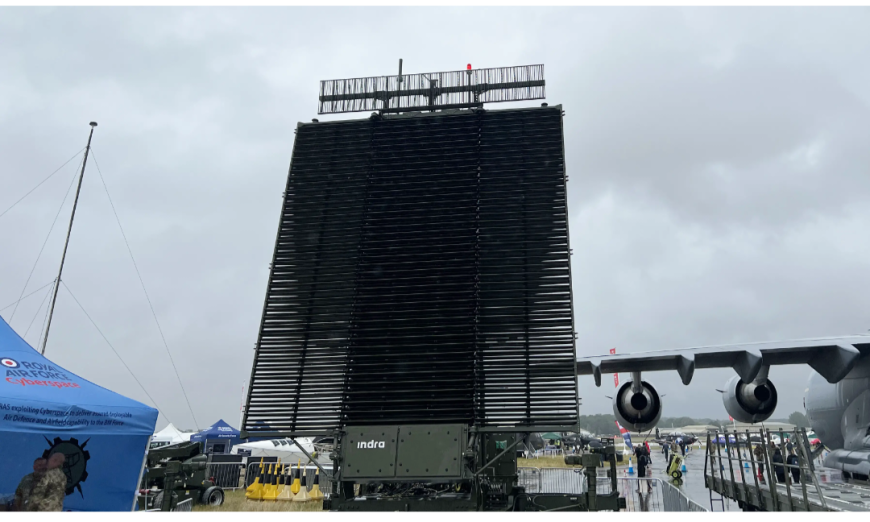Lanza 3D long-range transportable radar (LTR-25). Photo, Indra.
28th. July, 2023. The UK Royal Air Force (RAF) is operating Indra’s long-range transportable Lanza 3D radar air defence system as an integral part of the surveillance of the United Kingdom’s airspace.
The radar can be rapidly deployed anywhere in the world as part of the RAF’s Global Enablement Team.
“The deployment of this radar with the RAF, highlights Indra’s ability to meet the needs of the most technically demanding clients and reinforces our position as one of the world’s leading radar suppliers”, commented Domingo Castro, Indra’s Integrated Systems and Space Director.
Recently, Indra had also agreed to install the first of the 23 Lanza-N radars that will equip Indian Navy ships over the next decade. The Lanza radars will replace the ELM-2248 MF-STAR and RAWL-02/LW-08 radars on India’s destoryers: Kolkata-class and Visakhapatnam-class, according to Globaldata Defence analyst Tushar Mangure.
The Lanza is a family of 3D radar systems, based on a fully modular and scalable architecture, both in hardware and software. Indra designed the RAF´s Lanza radar as a tactical deployable radar, capable of being rapidly transported by air, sea, rail and road.
The system can detect and track tactical ballistic missiles, providing air surveillance command and control centres with the early warning information required to neutralise attacks. It delivers the trajectory parameters necessary to initiate offensive, defensive or intelligence measures, such as the estimated launch point, cue point, impact and interception.
In addition, the radar incorporates advanced techniques and algorithms, developed in-house by Indra, to mitigate the reflections and clutter caused by wind turbines and solar panels. This is an effective, validated, capability in these increasingly challenging, densely populated environments.
Global radar market.
The ‘Global Military Radar Market’ is anticipated to register a compound annual growth rate of 2.4%, growing from $10.2bn in 2022 to $12.9bn by 2032. The cumulative market for global expenditure on Military Radar is valued at $134.3bn over the forecast period.
The market consists of three categories: Air Radar, Land Radar and Maritime Radar. The market is expected to be dominated by the Air Radar segment, which accounts for 45% of the market, followed by Land Radar segment with 32.1% share. Among geographic segments, North America is projected to dominate the sector with a share of 41.4%, followed by Asia-Pacific and Europe, with shares of 24.1% and 22%, respectively.

